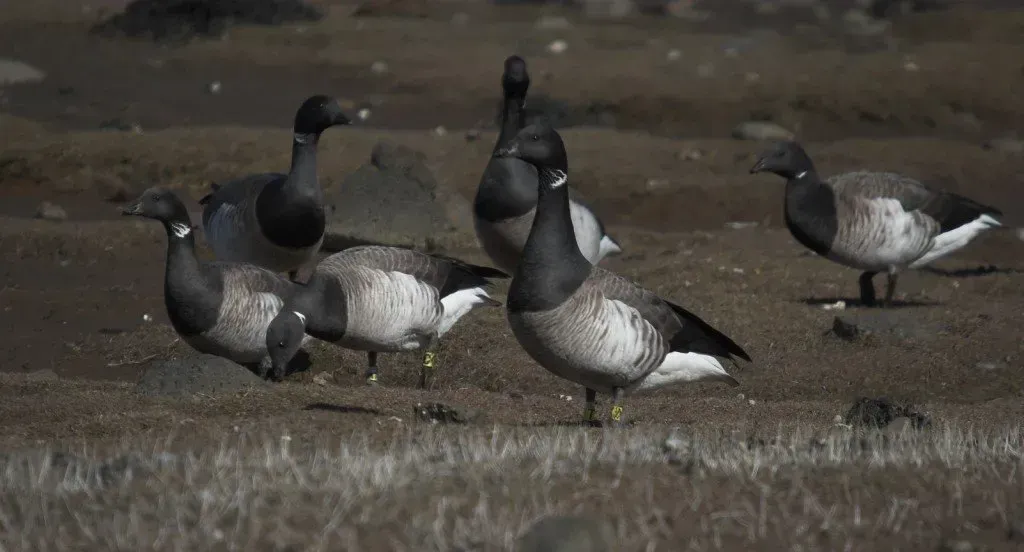Holy Island
Holy island lies in the centre of the National Nature Reserve that stretches from Budle Bay in the south, to Cheswick in the North.This huge area of Inter-tidal mudflats and dunes covers over 8500 acres and is designated a Special protection area (SPA) and is administered by English Nature.It is a superb year round birdwatching location, but comes into its own during migration periods and especially in the winter when it attracts many tens of thousands of wildfowl and waders.
Excellent birdwatching all year
The Lough
The lough is overlooked by the Paul Greenwood memorial hide (access at all times) and has breeding Black-headed Gull, (2-300 pair), Little Grebe, coot, moorhen, mallard and tufted duck.Irregular breeding species include shoveler and teal and since the late 1990's they have been joined by Ruddy duck.The lough also attracts migrating waders,such as Spotted Redshank and Wood Sandpiper.
The Straight and Crooked Lonnen
One of the most famous birding spots in northumberland. An easterly wind in Autumn combined with bad weather can bring huge 'falls' of migrants to Holy Island.Because of the general lack of cover the 'lonnens' have become legendary to 'twitchers' and have produced some of Northumberland's rarest birds.Also worth checking are the island's Sycamore trees (especially the Lindisfarne Hotel and the vicarage garden) which are favoured by warblers looking for the last insects of the year.Records for Yellow-browed warbler pictured, Radde's warbler, Dusky warbler, Barred warbler and others.Reccent rarities include Siberian Accentor.
Winter birding
As timing and weather are of critical importance if coming to Holy Island in search of rarities, winter is a far more relaxed affair. Many birders come to Lindisfarne at this time of the year for the island's speciality, the internationally important numbers of Pale-bellied Brent geese. They are joined by Pink-footed and Greylag geese as well as huge numbers of Wigeon. Wader numbers are equally spectacular with nationally important numbers of Bar-tailed Godwit and Grey plover. The seas around the island can hold all three divers and the more sheltered areas, both Red-necked and Slavonian grebes.



